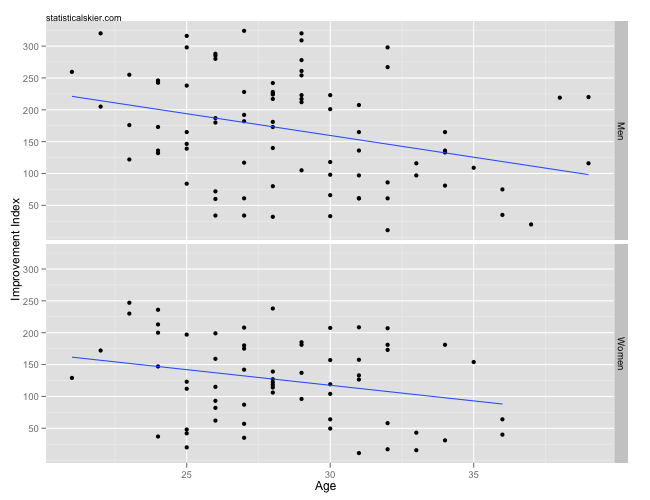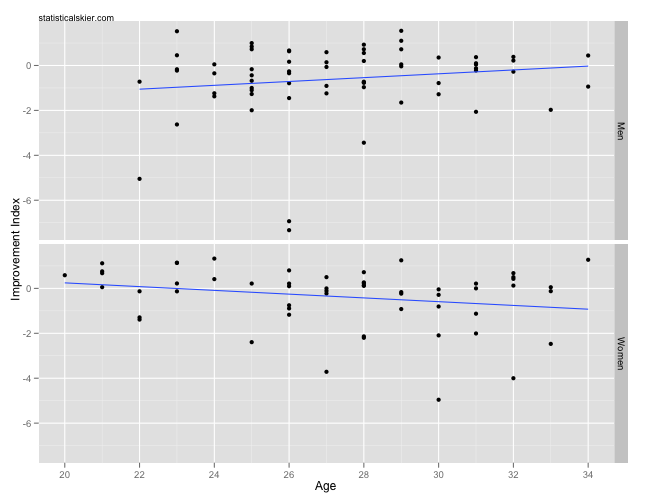A commenter asked if there was a connection between my lists of improved and un-improved skiers and age. Easy enough to check, so let’s go to the tape. Here are the distance skiers:
 The y-axis (Improvement Index) has no units, so don’t try to interpret it. It’s just the mash-up of several ways of measuring changes in performance I used to rank the skiers. Lower values are bad (un-improvement) higher values are good (improvement). The relationship is statistically significant for both men and women, although as you can see from the scatterplot, the practical lessons we can draw from it are limited.
The y-axis (Improvement Index) has no units, so don’t try to interpret it. It’s just the mash-up of several ways of measuring changes in performance I used to rank the skiers. Lower values are bad (un-improvement) higher values are good (improvement). The relationship is statistically significant for both men and women, although as you can see from the scatterplot, the practical lessons we can draw from it are limited.
Older skiers are, on average, more likely to see a year-over-year decline, which isn’t terribly surprising. Using this measure, it’s difficult to interpret the magnitude of the decline, since my “Improvement Index” doesn’t have any sensible units. So it’s not really clear what a decline of 10 on this index means, practically speaking.
The picture for sprinting is quite different:
 Once again, this “Improvement Index” has no meaningful units (and it’s on a completely different scale!), but lower values are bad (un-improvement) and higher values are good (improvement). Neither of these relationships are statistically significant.
Once again, this “Improvement Index” has no meaningful units (and it’s on a completely different scale!), but lower values are bad (un-improvement) and higher values are good (improvement). Neither of these relationships are statistically significant.
This is kind of interesting to me, since I would have expected sprinting (generally considered friendlier to younger folks) to have a stronger relationship with age than distance skiing. One possible explanation is the sprinting hasn’t quite been around long enough to accumulate enough older sprinters for us to see much of an effect.
[ad#AdSenseBanner]
{ 1 } Trackback
3chicago
Post a Comment